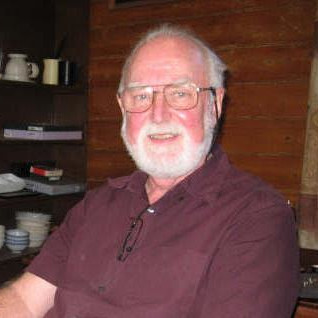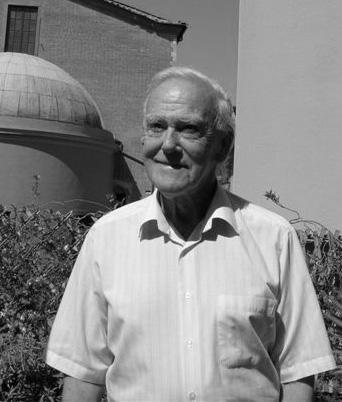What is VB2000?
VB2000 is an ab initio electronic structure package for performing modern Valence Bond calculations based on a highly efficient VB algorithm—the so called Algebrant Algorithm[1-6]. It has a general implementation of the Group Function (GF) Theory [7-9], in which a large molecule is described in terms of its constituent parts of physically identifiable "electron groups". The modern VB method implemented in VB2000 produces CASSCF(N, N) quality wave functions with only a small fraction of CPU cost for a CASSCF calculation for N > 10. The combination of efficient VB methods and the general implementation GF theory in VB2000 makes it a very powerful tool with the investigation of the nature of chemical bonds[10-19].
The development of VB2000 has been motivated by two main considerations. First, there is a need to obtain high-precision electronic wave functions, capable of giving quantitative substance to the empirical and intuitive ideas distilled from more than two hundred years of experimental chemistry. There exist within molecules "structural units" such as chemical bonds and functional groups, often with highly individual properties, which are transferable from one environment to another with little change; the behavior of such units conforms, in many cases, to empirical "additivity rules" which have never received a convincing theoretical explanation. Second, although valence bond theory, as developed in the 1930s and 1940s, was brilliantly successful in rationalizing such ideas, within the conceptual framework of quantum mechanics, it failed completely to provide rigorous quantitative predictions. The reason was simply that for a system of N electrons the computational cost of ab initio VB calculations tended to grow like N factorial.
With use of the Algebrant Algorithm, ab initio VB calculations on systems with up to about 14 electrons are now becoming 'routine' — even though N! is then of the order 9×1010. However, the majority of molecules of real chemical interest possess far more than 14 electrons. It therefore becomes mandatory to make some kind of conceptual 'separation' of a larger molecule into smaller and more tractable components. By using the Group Function (GF) approach for this purpose, VB2000 brings molecules with many groups within the scope of rigorous non-empirical investigation. Even though the current release has a limitation to a maximum of 16 electrons for each VB group, the full VB calculation of up to a 16-electron group is technically feasible with even a home PC. With the VB2000 program, innovative VB calculations on relatively large molecules can be performed.
The following special features of VB2000 should be noted:
- The program has been carefully engineered and is highly modular. There is in principle no limit to the number of electron groups that can be recognized; the larger the molecule, the larger the number of groups to be selected. The actual form of each group function is entirely at the discretion of the user. VB2000 provides a general platform for GF calculations of any kind (e.g. using a VB function for one group and a CASVB (CASSCF equivalent) function for another). Both CASSCF and GVB methods can be considered as special cases of GF Theory.
- The methodology used ensures that calculated energies are true variational upper bounds and that the results obtained are size consistent. The detailed forms of the group functions are not prescribed at the beginning of a calculation (as they were in early GF calculations [8], where the global basis was partitioned into subsets, each considered adequate for describing a particular group); they are determined variationally as a result of optimization of the wave function for the entire system, subject only to a strong-orthogonality constraint. This permits the study of chemical reactions, for instance, in which the subsystems representing reactants and products may have forms which change quite dramatically during the reaction process.
- In most cases, even a simple one-structure VB wave function can recover most of the corresponding CASSCF correlation energy with only a small fraction of the CPU cost for the CAS calculation. The use of wave functions of VB type for the groups of greatest chemical interest ensures correct behavior when bond-breaking processes occur within a group, and also ensures that the wave functions describing separate fragments possess a high degree of localization.
- The GF theory approach used in VB2000 leads to wave functions which are highly compact and therefore provide clear links with chemistry and 'chemical intuition'. For example, the electron density for the entire molecule is always the sum of the densities of its constituent parts - even though the forms of the group densities may change appreciably in some chemical processes. This provides a firm basis for the discussion of the 'additivity rules' which apply to many molecular properties.
- Very often only a small part of a large molecule is responsible for certain chemical and physical properties. The great flexibility of VB2000 allows one to study such a limited region, with a high-precision wave function, using more approximate group functions (such as Hartree-Fock) to calculate the mean field provided by the rest of the molecule.
- One important feature of the VB method is that the optimized orbitals tend to be highly localized. The GF framework combined with localized VB group functions provides the possibility of developing a linear scaling algorithm for truly large systems by harnessing the exponentially increasing computer power.
License
VB2000 3.0 is licensed under the GNU General Public License v. 3 (GPLv3).
This program is free software: you can redistribute it and/or modify it under the terms of the GNU General Public License as published by the Free Software Foundation. Click here to see the license terms.
Capabilities of VB2000
Hartree-Fock molecular orbital theory
A Hartree-Fock molecular orbital calculation is the starting point for any other type of quantum chemical calculation. Although VB2000 is not designed for pure Hartree-Fock (HF) method, we have made a number of improvements over the last few years.
Pipek-Mezey localization
The Pipek-Mezey (PM) method for localization of molecular orbitals (MOs) provides a solid base for dividing electrons into spatially separable groups. The localized MOs (LMOs) of each electron groups are the starting points for generating the initial group functions and the corresponding one-electron densities. One of the initial guess methods for VB orbitals is to split each bonding LMO into two overlapping AO-like orbitals.
Modern ab initio VB method
A major feature of VB2000 is the implementation of modern valence bond theory at ab initio level using the algebrant algorithm. VB2000 can be used to perform very general VB calculations[10-22] such as:
- Multiple-Structure VB (VB)
- Spin-Coupled Theory, recently renamed Spin-Coupled Generalized Valence Bond (SCGVB)
- Complete Active Space VB (CASVB)
- VB with Localized Electron Pairs (GVB)
- VB Configuration Interaction (VBCI)
- Breathing Orbital VB (BOVB)
- Spin Coupled with N electrons and M orbitals (SC(N,M))
- Multiconfigurational Spin Coupled (MC-SC)
Strict localization and enhanced localization of VB orbitals
In most cases, VB orbitals are highly localized. The localized AO-like VB orbitals provide a clear picture that each VB structure corresponds to a Lewis structure unambiguously. However, it is not uncommon that the VB orbitals have considerable
delocalization over to the neighbor atoms. In such cases orbital localization methods may be used. There are different ways to force VB orbital localization. One straight approach is to divide basis functions into groups, and only allow each VB orbital to be optimized within a particular predefined group of basis functions. This is the strict localization constraints as used in the BOVB approach. This is implemented in VB2000 as the Brillouin Mask method. We have also introduced a more flexible control for localization enhancement of VB orbitals, im which an adjustable parameter is used.
Group Function Theory and its combination with VB method
In the Group Function Theory, a molecular wave function is expressed as an antisymmetrized product of individual group functions [7-9]. The spin-orbitals (one-electron 'groups') of a Slater determinant are thus replaced by many-electron group functions - each of which may allow a considerable degree of intra group electron correlation. In VB2000, the electron-correlated group functions are obtained by the VB method. Even though the general mathematical formulation of this approach was completed way back in the 1960s and it provides a unifying frame work for many varieties of electron correlation calculations, the general implementation of GF Theory, especially its combination with VB method, was introduced for the first time in VB2000.
Energy profile of chemical reactions
VB2000 provides a functionality for the automatic calculation of the energy profile of a chemical reaction along the reaction path guided by a few intermediate structures (such as reactant, transition state, and product etc.). For the simplest cases, the Linear Synchronous Transition (LST) method can be a good approximation for the reaction path between reactant and product geometries.
Structure weights
Important information from a multi-structure VB calculation is provided by the weights of the various VB structures. In VB2000, we have implemented four types of structure weight analysis: the Mulliken analysis (also called Chirgwin-Coulson analysis [23]), Löwdin [24], Gallup and Norbeck [25], and Hiberty [26] analyses.
Spin density
The spin density for open shell VB wave functions can be calculated.
Generalized Product Function Energy Partitioning (GPF-EP)
GPF-EP [27] is an powerful Energy Decomposition Analysis (EDA) Method based on the GF Theory. It identifies the quantum interference between electronic states as the physical phenomenon responsible for the formation of chemical bonds. As for VB2000 3.0, GPF-EP analysis is available only in the VB2000 / GAMESS version. For further details, plese see this page.
Visualization
In both the stand-alone and GAMESS / VB2000 versions, functionality has been added for plotting 2D VB orbitals, displaying 3D orbitals and molecular geometries. The 3D orbital files in Gaussian Cube format can be generated. The files can be visualized by a variety of visualization programs, such as VMD, MacMolPlt, Molekel, Ghemical, PltOrb, Molplt, gOpenMol, Pymol etc.
Extended functionalities in GAMESS / VB2000
A very significant technical improvement in VB2000 is its ability to be fully integrated with third-party programs: GAMESS-US and, formerly, Gaussian. In addition to all functionalities of the stand-alone version, some additional features have been added for VB calculations:
- Dipole moments and higher moments calculations, and other properties
- Geometry optimization
- Vibrational frequency calculations
- Effective core potential
VB2000 Development Team

Jiabo Li
ChemXAI Inc, 53 Barry Lane, Syosset, NY 11791, USA.

Brian Duke
Monash Institute of Pharmaceutical Sciences, Monash University, 381 Royal Pde, Parkville, Victoria, 3052, Australia.

David Sousa
Instituto de Química, Universidade Federal do Rio de Janeiro, Brazil.

Rodrigo Bitzer
Instituto de Química, Universidade Federal do Rio de Janeiro, Brazil.
In Memoriam: Roy McWeeny (1924-2021)

Roy McWeeny was the developer of the GF Theory
and always have been a kind of spiritual symbol for VB2000.
Unfortunately, our dear friend Roy passed away on April 29th, 2021.
We here express our enormous gratitude to him.
If you want to include new features in VB2000 and / or be a part of the team, please contact us!
References
- Jiabo Li and Roy McWeeny, VB2000: Pushing Valence Bond Theory to New Limits, Int. J. Quant. Chem., 89 (2002) 208.
- Jiabo Li, Brian J. Duke, Thomas M. Klapötke and Roy McWeeny, Spin-Density of Spin-Free Valence Bond Wave Functions and Its Implementation in VB2000, J. Theor. Comp. Chem. 7 (2008) 853.
- Jiabo Li, and Ruben Pauncz, Efficient Evaluation of the Algebrants of VB Wave Functions Using the Successive Expansion Method. I: Spin S = 0, 1/2. Int. J. Quant. Chem., 62 (1997) 245.
- Jiabo Li, Graphical Representation of a New Algorithm for Nonorthogonal Ab Initio Valence Bond Calculations, Theor. Chim. Acta, 93 (1996) 35.
- Jiabo Li, New Algorithm for Nonorthogonal Ab Initio Valence Bond Calculations II: Subgraph-Driven Method, J. Math. Chem., 17 (1995) 295.
- Jiabo Li, and Wei Wu, New Algorithm for Nonorthogonal Ab Initio Valence Bond Calculations. I: New Strategy and Basis Expressions, Theor. Chim. Acta, 89 (1994).
- Roy McWeeny, The Density Matrix in Many-Eletron Quantum Mechanics I. Generalized Product Functions. Factorization and Physical Interpreation of the Density Matrices, Proc. R. Soc. London, Ser A 253 (1959) 242.
- János G. Ángyán, Chemical Building Blocks in Quantum Chemistry Calculations. Perspective on “The Density Matrix in Many-Eletron Quantum Mechanics I. Generalized Product Functions. Factorization and Physical Interpreation of the Density Matrices”, Theor. Chem. Acc. 103 (2000) 238.
- Roy McWeeny, Separability of Quantum Systems: A Density Matrix Approach, Adv. Quantum Chem., 31 (1999) 15.
- Anton Hammerl, Thomas M. Klapötke, Heinrich Nöth, and Markus Warchhold, Synthesis, Structure, Molecular Orbital and Valence Bond Calculations for Tetrazole Azide, CHN7, Propellants, Explosives, Pyrotechnics 28 (2003) 165.
- T. M. Klapötke, Nichtmetallchemie, in: Moderne Anorganische Chemie, E. Riedel (ed.), Walter de Gruyter, Berlin, New York, 2nd edition , 2003. 3rd edition, 2007.
- Aggelos Avramopoulos, Herbert Reis, Jiabo Li, and Manthos G. Papadopoulos, The Dipole Moment, Polarizabilities, and the First Hyperpolarizabilities of HArF. A Computational and Comparative Study, J. Am. Chem. Soc., 126 (2004) 6179.
- Thomas M. Klapötke, Jiabo Li, and Richard D. Harcourt, Ab initio Double-ζ (D95) Valence Bond Calculations for the Ground States of S2N2 and S42+, J. Phys. Chem., 108 (2004) 6527.
- Thomas M. Klapötke, Richard D. Harcourt, and Jiabo Li, Ab initio Double-ζ (D95) Valence Bond Calculations for the Ground States of NO2, O3 and ClO2, Inorg. Chim. Acta, 358 (2005) 4131.
- R. D. Harcourt, T. M. Klapötke, J. Li, A note on some valence bond calculations for the ground-state of the hydrogen molecule, Inorg. Chim. Acta, 358 (2005) 4049.
- D. Benker, T. M. Klapötke, G. Kuhn, J. Li, Ch. Miller, An Ab Initio Valence Bond (VB) Calculation of the π Delocalization Energy in Borazine, B3N3H6, Heteroatom Chemistry, 16 (2005) 311.
- A. Avramopoulos, L. Serrano-Andrés, J. Li, H. Reis, M. G. Papadopoulos, Linear and nonlinear optical properties of some organoxenon derivatives, J. Chem. Phys., 127 (2007) 214102.
- L. Serrano-Andrés, A. Avramopoulos, J. Li, P. Labeguerie, D. Begue, V. Kello and M. G. Papadopoulos, Linear and nonlinear optical properties of a series of Ni-dithiolene derivatives, J. Chem. Phys., 231 (2009) 134312.
- Brian J. Duke and Remco W.A. Havenith. Implications of the complete basis set limit in valence bond theory: A case study of molecular hydrogen, Theor. Chem. Acc., 135 (2016) article no. 82.
- Peter B. Karadakov, David L. Cooper, Brian J. Duke, and Jiabo Li, Spin-Coupled Theory for 'N Electrons in M Orbitals' Active Spaces, J. Phys. Chem. A 116 (2012) 7238.
- Philippe C. Hiberty and Sason Shaik, BOVB - A Modern Valence Bond Method that Includes Dynamic Correlation, Theor. Chem. Acc. 108 (2002) 255.
- André Gustavo H. Barbosa, André M. Henriques, João G. S. Monteiro et al., The multiconfiguration Spin-Coupled approach for the description of the three-center two-electron chemical bond of some carbenium and nonclassical ions, Theor. Chem. Acc. 137 (2018) 21.
- B. H. Chirgwin, and C. A. Coulson, Proc. R. Soc. Lond., Ser. A 201 (1950) 196.
- P. O. Löwdin, J. Mol. Struct. (THEOCHEM) 229 (1991) 1.
- G. A. Gallup and J. M. Norbeck, Chem. Phys. Lett. 21 (1973) 495.
- P. C. Hiberty, G. Ohanessian, Int. J. Quantum Chem., 27 (1985) 245.
- T. M. Cardozo and M. A. C. Nascimento, Energy partitioning for generalized product functions: The interference contribution to the energy of generalized valence bond and spin coupled wave functions, J. Chem. Phys., 130 (2009) 104102.




